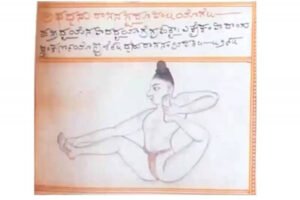
Pre-natal Yoga: Questions and Answers
Prasu Yoga is pregnancy yoga aimed at supporting the mental and physical well-being of expectant mothers. In this post, we have gathered the most common questions

Exercises for the body in hatha yoga texts were not only called “asana”.
They were also called mudra (seal), kriya (action) and pitha (sitting).
Asana appears already in the Yoga Sutra, as a convenient posture for meditation without an additional name.
Next, Goraksha-shataka writes about two asanas – siddhasana and padmasana (which are also clearly intended for meditation)
At the same time, in Kama Shastra, the names of asanas familiar to us are “padmasana”, “simhasana” – the names of the poses of love.
Sharada-tilaka-tantra and Dattatreya-yoga-shastra already write about five asanas and mudras, respectively.
The first Hatha Yoga texts (Goraksha Yoga Shastra and Amritta Siddhi) do not describe asanas at all.
Since the Middle Ages, asanas have begun to receive more primary attention. There are 8 asanas in the Sandilya Tspanishad and 15 in the Hatha Yoga Pradipika.
Yoga asanas were not created for the sake of a strong and beautiful body (and a beautiful picture on Instagram). How do we know this? This can be seen even in those quotes that we have cited above. We do not observe such goals in these quotations. When reading descriptions of yoga asanas, we never meet the promise “asana will make you stronger, more flexible and more beautiful”, although we often meet promises near the description of asanas. These are the promises of health, victory over diseases and clear channels – that is, asanas in the texts of the Middle Ages are described as bringing yoga therapeutic and energy effects.
Apparently, at the time of this commentary, it was obvious that the essence of asana is calming the mind and eliminating rajasic states.
And this requires a long and steady stay in each position.
Asanas were usually called:
• according to the principle of similarity, when the name of the asana emphasizes the similarity of its shape to a certain animal or object.
• according to the principle of instruction, when the name suggests with which parts of the body the yogi performs it, what happens in the asana.
We talk in more detail about the logic of asana names and exercises for memorizing them in the section Dictionary of asanas.
The performance of yoga asanas requires a well-defined group of muscles to be activated, and also in a certain sequence. Whereas in everyday life, a person uses muscles rather unsystematically.
In turn, specific deformations of the body in the asana affect the internal organs and stimulate them.
So asana affects the human body. And, depending on the mechanism of such influence, asanas are divided into types:
• stretching
• twisting
• strength building
• inverted
• squeezing
• balancing

Prasu Yoga is pregnancy yoga aimed at supporting the mental and physical well-being of expectant mothers. In this post, we have gathered the most common questions
This unscheduled article has been induced by my short post on Facebook. A couple of days ago my sight was caught by an ad of
The next report that I would like to give my special consideration to was made by a person who is believed to be a living